Original URL: https://www.theregister.com/2006/05/30/hd_buyers_guide_uk/
HD TV in the UK
Need a next-gen telly? We'll put you in the picture
Posted in Bootnotes, 30th May 2006 15:04 GMT
Buyer's Guide Even if you don't give a flying tackle for the football, the industry's out to sell you a brand spanking new HD TV. But is now the right time to buy? Reg Hardware guides you past the gotchas...
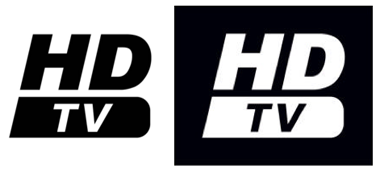
Analogue to digital
The digital switchover starts in 2008 when the Border region has its analogue signal turned off. The process then works through Granada, Wales and the West Country in 2009; Grampian, Scottish and the West in 2010; Yorkshire, Central and East Anglia in 2011; and culminates in London, Meridian and Ulster in 2012. The consumer electronics industry is using the 'Big Switch' to sell HD-ready TVs but the truth is that you can quite happily watch digital TV on a regular analogue CRT TV, as anyone who uses a Sky, NTL, Telewest or Freeview set-top box can testify.
It's easy to get confused by this FUD, as the majority of the buying public associates digital TV with a flat LCD or plasma panel. The situation isn't helped by the World Cup. The 1966 tournament was the first to be broadcast in colour and now the 2006 event is the first to go out in HD, so there's a major push to convince footie fans to buy HD TVs.
But if you've visited a TV shop recently and seen an HD TV in action it's a safe bet that you were watching current standard definition (SD) TV content because there is almost no HD content being broadcast at present. If you were lucky, you saw a regular DVD, while many stores' current pinnacle is an HD sample from the BBC streamed from a hard drive.
Screen test
The TV itself will have been a flat LCD or plasma screen because most British houses aren't large enough to accommodate a full-size rear-projection DLP (Digital Light Projection) TV, which is a shame as they are relatively inexpensive. The Samsung SP50L6HDX sells for about £1,349 which is pretty darn cheap for a 50in (125cm) screen. However, DLP is an acquired taste as the colours can be harsh on the eye so the picture lacks the warmth of a plasma display's image. There are such things as HD CRT TVs, but you're unlikely to find many of them in the UK as they are big boxes that take up a huge amount of space. Samsung has a slimline version in the works, the 32in WS32Z409TQ, which retails for around £450.
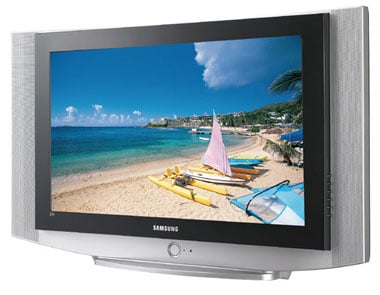
It would be lovely if we could come up with a rule of thumb to separate plasma and LCD screens but the latest LCDs look absolutely superb, with gorgeous colour reproduction. If you walk around a showroom and hold your hand above the vents at the top of the TV you'll find some plasmas are incredibly cool while some LCDs are surprisingly warm, both contrary to the stereotype. In practice there's little to choose between the two technologies, so the main thing is to trust your eyes and your judgement, instead of blindly following the spec sheet.
HD Resolutions
For a TV picture to be HD it has to be one of three resolutions: 720p, 1080i or 1080p. There are other resolutions, but they're essentially standard definition (SD) sizes. The resolution's number is the number of horizontal lines that make up the image, analogous to its height in pixels. The letter, p or i, stands for 'progressive' or 'interlaced'.
Progressive images are displayed like a movie, one frame at a time, in rapid succession. Interlacing is the same technique used in regular TV: send half the picture at a time but do so twice as quickly. It's a bandwidth-saving technique. Each 'half' of the image comprises alternate sets of lines, so first you send lines 1,3,5,7... etc. then you send 2,4,6,8... and so on. The first set is drawn on the TV screen, then the second lot, but the speed is such that they eye doesn't notice.
Well, almost. In practice, this approach can create visible artefacts when rapidly moving images and there's a slight downgrade in the image's effective resolution. This isn't an issue with progressive pictures, which is why most US HD broadcasters show programmes in 720p not 1080i, even though the latter has more pixels and therefore should be more detailed. ®
Aspect ratio
A decent SD or HD TV can handle a change in aspect ratio with minimal fuss, which is useful as some content, such as the news, is still broadcast in old-style 4:3 (width:height), while movies and much of the current crop of TV are transmitted in a widescreen, 16:9 format, but you'll notice that the news, for instance, tends to be 4:3 so if your TV is a bit stubborn, Huw Edward's face will look horribly distorted as though he is near a high gravity field.
The situation is going to get worse when we add HD content to the mix as your TV will have to be flexible enough to chop and change aspect ratio and resolution. Most HD content will be transmitted in 720p so in theory you'll lose some detail if you buy a 1080i TV but in practice the TV broadcast passes through so many compression/decompression and coding/decoding cycles that this is a relatively minor problem.
Sky in the past said it has "opted for both 720p and 1080i", but it recently announced that it will broadcast everything in 1080i. This despite the fact that most US HDTV is broadcast in 720p so Sky will have to upscale imported content to 1080i, and most European TV standards bodies recommend 720p. We say ‘watch this space’ to see if Sky goes back on this slightly barmy plan.
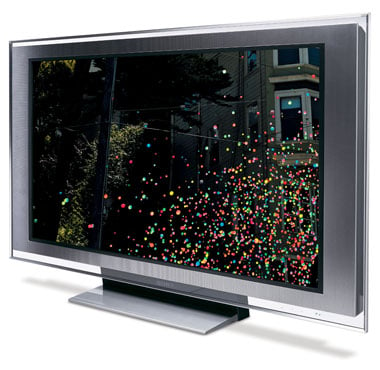
You can watch low-resolution SD TV on a high-resolution HD TV and it looks perfectly acceptable, provided the hardware is decent - again, get the shop to demo both. If you're unconvinced you can splash out £90 on an LG DVK9900H upscaler which supports 1080i and will convert an SD picture to HDTV resolution, but we strongly suggest that you try before you buy. By its nature upscaling technology has to guess how to scale a 768 x 576 picture up to, say, 1,280 x 720, and the resolution won't be as clear and as sharp as a picture that is displayed at its native resolution.
Size matters?
If you're happy with PAL TV on a 32in CRT then 720 HD content will look equally good on a quality 40in HDTV, but if you're heading for 50in territory you ought to consider 1080i. This is the resolution supported by the next-generation optical disc formats Blu-ray Disc and HD DVD, and it's where things start to get tricky.
In theory, a 1080p-capable HD TV delivers the ultimate in quality, but in practice they are very thin on the ground and also rather expensive. 1080i is superb for a very large home cinema TV but is unlikely to deliver any practical benefit in everyday use. It can yield better-looking still images than the lower-resolution 720p, but is effectively no more detailed in fast-moving sequences. For that reason, 720p is likely to be the mainstream broadcast standard for some years to come.
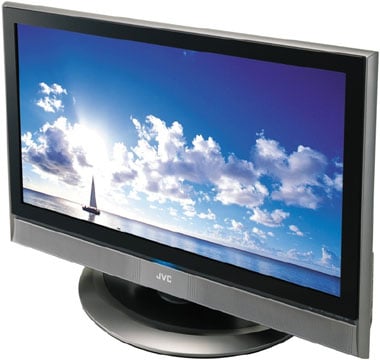
Cables and copy-protection
You'll need to deliver the HD content to your TV so it's time to talk about cables and connections. You'll want one SCART connector for your current DVD player and a second SCART for your PS2 or Xbox, and component-video will come in handy if you have an Xbox 360 which has HD output. You can also use component to carry HD content provided it's not copy-protected. Sooner or later you can expect that most HD content will be encrypted with the industry-standard AACS copy protection system, so we have to consider the HDMI (High-Definition Multimedia Interface) connector.
Hollywood will not distribute HD content without a bullet-proof anti-piracy system so it has invented the encryption bubble. As the encrypted HD signal passes down the line each device in the chain checks that the next device supports AACS and has an HDCP (High-bandwidth Digital Content Protection) chip which holds the encryption keys securely. The visible part of this chain is the HDMI connector, which looks similar to a Firewire port. Provided you connect your Sky HD box and Blu-ray Disc player to your HDTV with HDMI then all is well, up to a point. HDMI supports both audio and video so if you want the full home theatre effect you'll need a surround sound receiver with HDMI pass-through.
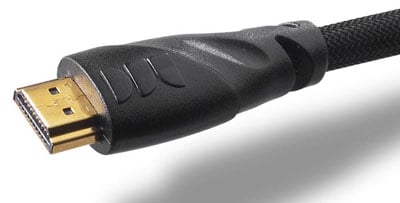
The content protection chain is supposed to end at your HDTV when you watch the picture and listen to the audio, but if, say, you connect a PVR or a camcorder so you can record shows to hard disk or digital tape then the chain is broken. The system responds by dropping the resolution of the image so 1080i HD drops from 1,920 x 1,080 to 960 x 540, and a 720p image will drop even lower, probably to 480p which is an HD standard that is similar to the ols US TV system, NTSC.
In other words, if there's a glitch or one of your pieces of hardware doesn't fully support the correct version of AACS and HDCP you'll end up with an image that is worse than you get from standard definition TV today. This may sound like scaremongering but the HDTVs that are on sale at present are only 'HD Ready', and Sony has already taken some stick for shipping early HDCP TVs that don't support full 5.1-channel surround sound, not to mention the fact that the 20GB PlayStation 3 will have Blu-ray but not HDMI.

Sky, meanwhile, is having problems delivering HDTV, but give it a few months and you'll be able to receive HD from Sky, NTL and Telewest if you're willing to pay for it. The missing link is the BBC and free-to-air. We're told that the Beeb won't be able to transmit HD TV signals alongside analogue and SD digital broadcasts. So, as things stand, HD Freeview won't be an option until 2012 when the analogue signal is turned off, freeing up some bandwidth. However there are rumours that the BBC will broadcast HDTV using the Astra2 satellite later this year.
You can get BBC HD content through Telewest's TVDrive system, but don't forget Telewest is selling BBC HD to its customers when they are also obliged to pay a licence fee. We should all be able to get BBC services free-to-air, including HDTV, but as things stand this won’t be the case until 2012 unless we also pay a satellite or cable channel.
Time to buy?
So let's look at the big questions. Do you need an HDTV? Well no, not really - not yet, anyway. The key is the availability of digital content and unless your a rabid footie fan, the best plan is to wait and see how well the satellite and cable services perform. Sky often has problems delivering SD TV through rain clouds and snow so the extra data of an HDTV broadcast might cause it real problems.
There's no doubt that sports and wildlife broadcasts will look superb in HD, but are you really prepared to spend £1,499 to see David Attenborough get down and dirty with mountain gorillas in 1080i?
The final unknown is the shift to HD disc formats, which looks like a bid by Hollywood to persuade us to scrap our movie collections and start all over again. No doubt Pirates of the Caribbean 3 will look stunning in HD but Orlando Bloom's acting won't be improved just because we'll be able to see every hair and pore in startling detail. ®
Related links
www.digitaluk.co.uk
www.digitaltelevision.gov.uk
www.freeview.co.uk